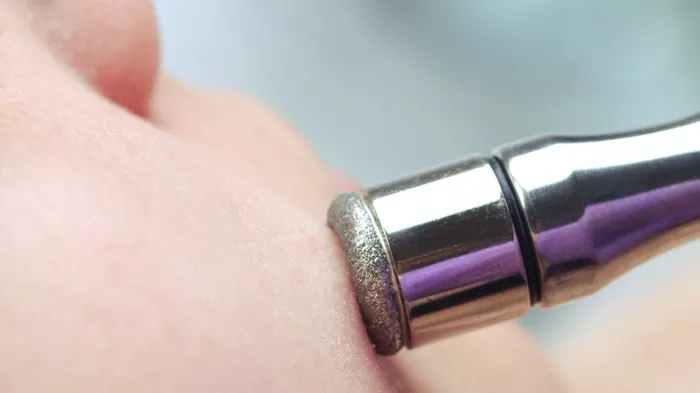Advancements in cosmetic technology have introduced various non-invasive treatments aimed at rejuvenating the skin and enhancing facial contours. One such innovative technique is the microcurrent face lift. This procedure has gained popularity for its ability to provide subtle lifting and toning effects without the need for surgery. In this article, we will delve into what a microcurrent face lift entails, how it works, its benefits, and considerations for individuals interested in this treatment.
Understanding Microcurrent Face Lift
A microcurrent face lift, often referred to as a non-surgical facelift or microcurrent facial, is a non-invasive cosmetic procedure designed to improve the appearance of the face and neck. Unlike traditional surgical facelifts that involve incisions and tissue removal, a microcurrent face lift uses low-level electrical currents to stimulate facial muscles and encourage collagen production, resulting in a lifted and toned appearance.
How Does It Work?
The procedure involves the use of a specialized device that emits gentle electrical currents. These currents mimic the body’s natural electrical signals, which play a role in muscle contraction and cellular communication. When applied to the facial muscles, microcurrents stimulate muscle activity, leading to increased blood circulation, improved lymphatic drainage, and enhanced production of collagen and elastin fibers.
Microcurrent face lifts work on multiple levels:
Muscle Stimulation: The electrical currents stimulate the underlying facial muscles, causing them to contract and tighten. This effect is similar to how muscles respond during exercise.
Collagen and Elastin Production: The microcurrents stimulate fibroblasts, the cells responsible for producing collagen and elastin. Increased collagen and elastin levels contribute to firmer, more youthful skin.
Cellular Function: Microcurrents also influence cellular metabolism, promoting improved cell function, which can lead to better overall skin health.
Benefits of Microcurrent Face Lift
Microcurrent face lifts offer several potential benefits:
Non-Invasive: Microcurrent face lifts do not require incisions or anesthesia, making them a non-invasive alternative to surgical facelifts.
Subtle Results: The results of a microcurrent face lift are subtle and natural-looking. Individuals typically experience a gentle lift and improved facial contours.
Minimal Downtime: Unlike surgical procedures that involve significant downtime for recovery, microcurrent face lifts usually have minimal to no downtime.
Improved Muscle Tone: Muscle stimulation through microcurrents can help improve facial muscle tone and prevent muscle atrophy.
Enhanced Circulation: The increased blood circulation and lymphatic drainage can lead to improved skin texture and a healthier complexion.
Collagen Boost: The procedure encourages the production of collagen and elastin, which contribute to firmer and more youthful skin.
Stress Reduction: The electrical currents used in the procedure can have a soothing and relaxing effect, reducing stress and tension in facial muscles.
The Microcurrent Face Lift Procedure
The microcurrent face lift procedure typically involves the following steps:
Cleansing: The skin is cleansed to remove any makeup, dirt, or impurities that could interfere with the treatment.
Application of Conductive Gel: A conductive gel is applied to the skin to enhance the conduction of electrical currents and ensure even distribution.
Electrode Placement: Small electrodes or wands are applied to specific areas of the face. These electrodes emit the microcurrents that stimulate the muscles.
Muscle Stimulation: The practitioner moves the electrodes along the target areas, delivering microcurrents to stimulate facial muscles.
Sculpting and Lifting: The practitioner focuses on areas that require lifting or toning, such as the jawline, cheeks, and forehead.
Repeat Passes: Multiple passes may be made over each area to maximize muscle stimulation and overall results.
Completion and Aftercare: Once the treatment is complete, any excess gel is removed, and the skin is moisturized. Some practitioners may apply a special serum or mask to enhance the effects.
Considerations and Who Is a Candidate?
Microcurrent face lifts are generally safe for most individuals; however, certain considerations apply:
Individual Goals: A microcurrent face lift is best suited for those seeking subtle improvements in facial contours and muscle tone.
Age Range: While the procedure is suitable for a wide age range, individuals in their mid-30s to mid-60s tend to benefit the most.
Frequency of Sessions: To achieve and maintain results, a series of sessions is often recommended. The frequency varies based on individual goals and skin condition.
Maintenance: Regular maintenance sessions are advised to prolong the effects of the microcurrent face lift.
Health Conditions: Individuals with certain medical conditions, such as epilepsy, heart conditions, or metal implants, may not be suitable candidates for the procedure.
Conclusion
The microcurrent face lift offers a non-invasive approach to achieving subtle facial rejuvenation and improved muscle tone. By utilizing low-level electrical currents, this procedure stimulates facial muscles, boosts collagen production, and enhances overall skin health. While it does not replace the dramatic effects of surgical facelifts, a microcurrent face lift can provide a natural-looking lift and improved facial contours. As with any cosmetic procedure, consulting with a qualified practitioner is essential to determine if a microcurrent face lift aligns with your goals and individual needs. Embrace the benefits of technology and science in the realm of skincare and enjoy a refreshed and revitalized appearance without the need for surgery.


